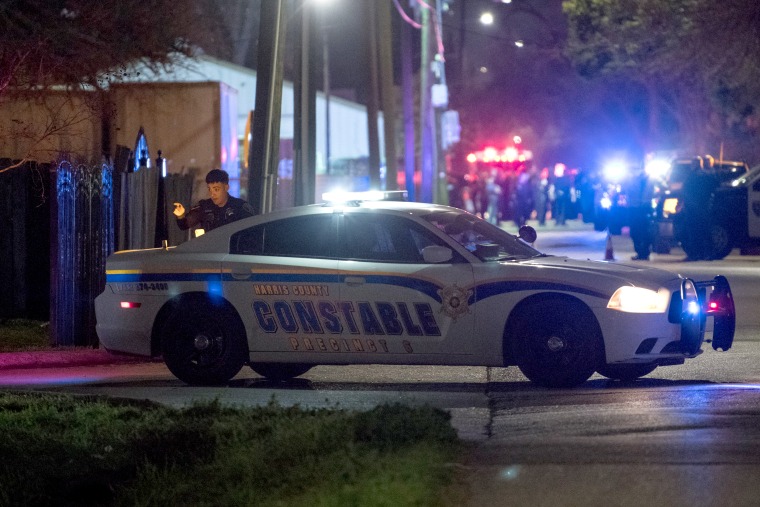The two suspected drug dealers who were killed in a gun battle Monday night that left five Houston police officers injured were allegedly selling an old-school narcotic to a new generation of addicts — black tar heroin.
Black-tar heroin looks more like molasses than the white or brownish powder that most Americans think of as heroin, according to the National Institute on Drug Abuse.
But it may be more familiar to people in the middle and west of the U.S.
“West of the Mississippi, almost all of the heroin is black tar,” said Jane Maxwell of the University of Texas, a national expert on substance abuse trends in the Lone Star State and the rest of the country.
Unlike the powdery version, black-tar heroin is dark and sticky and mostly sold in one ounce chunks.
“It’s just a black, gummy piece of something,” Maxwell said.
Produced primarily in Mexico and smuggled across the border, it’s commonly dissolved in water and injected or smoked, according to the New York Office of Alcoholism and Substance Abuse Services.
“Black-tar heroin has been making its way over to Texas for over 20 years now,” said Gilberto Gonzalez, a former undercover narcotics detective and former head of the Texas Narcotics Association.. “I remember working on a case with [U.S.] Customs in San Antonio and we knew there was a courier with black tar coming from Los Angeles. We found heroin on the soles of the shoes one of the ladies was wearing. It’s that sticky.”
But it’s less lethal than the heroin sold east of the Mississippi, which is often laced with fentanyl, a powerful opioid painkiller that packs 50 times more punch than heroin, experts said.
“On the East Coast, heroin is typically sold as a white powder, as is fentanyl, which may make it difficult to discern it from heroin,” according to Clinical Services of Rhode Island.
In many cases, addicts who think they are shooting up heroin are actually ingesting fentanyl, the Drug Enforcement Agency reported.
"Fentanyls are traditionally mixed into or sold as heroin, oftentimes without the customer’s knowledge," according to a DEA intelligence brief.
Although the type of heroin varies by region, the way people get addicted to it often follows a familiar pattern, Maxwell said.
“The common thing is you get addicted to painkillers and you go to heroin,” said Maxwell. “And if you’re west of the Mississippi, you’re going to buy black-tar heroin.”
Other experts agreed that many heroin users today first get hooked on prescription drugs.
“Heroin was always considered a real drug and somebody shooting up in a bathroom was considered hard core,” Gonzalez said. “Now with the opioid epidemic, the addiction disease has spread and middle-class kids are getting caught up in it. People who never would consider shooting up are shooting up now.”
Gonzalez said one of the most heartbreaking consequences of opioid addiction is that it breaks down peoples' resistance to sticking a needle in their arms.
"Years ago it was more hardcore people in desperate situations shooting up heroin," he said. "I went jogging the other day in a beautiful park in Dallas and I saw all these kids who didn't look like they should be doing drugs just strung out on heroin. It's a tragedy."

